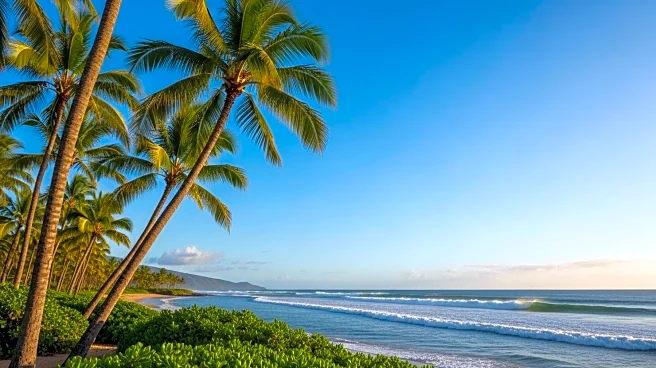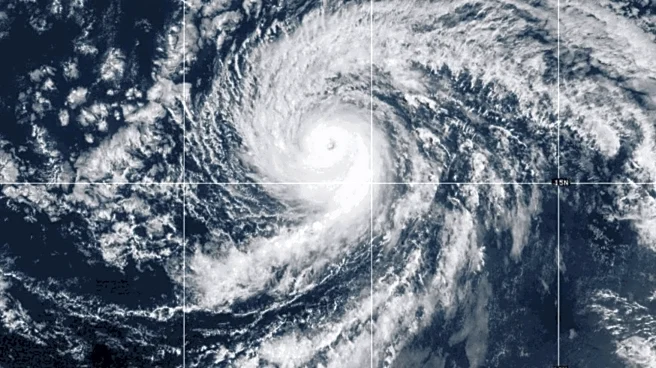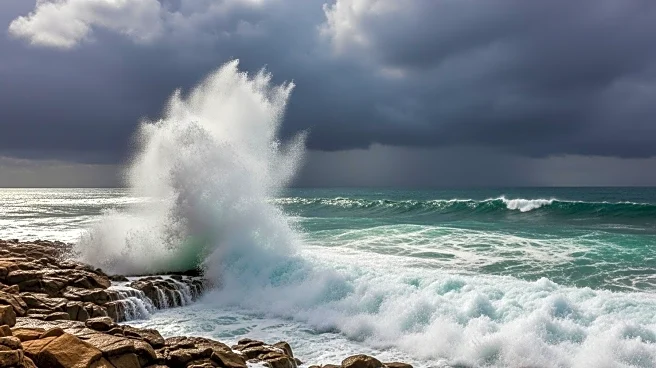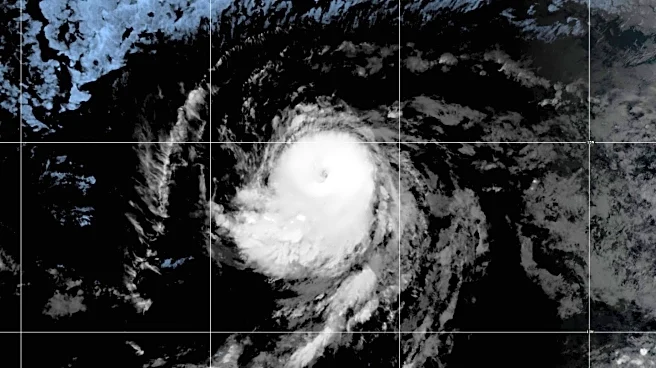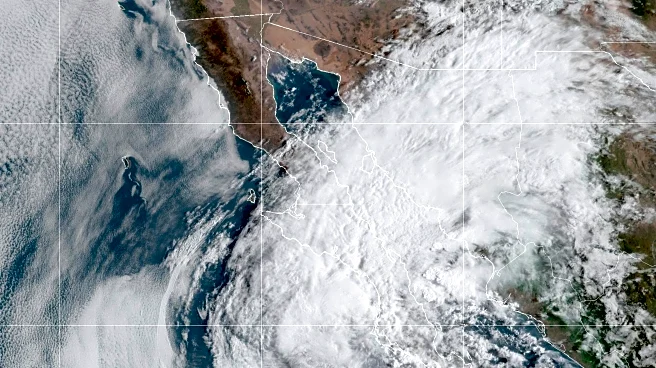What's Happening?
Hurricane Kiko, initially posing a significant threat to Hawaii, has shifted its path northward, reducing the likelihood of strong winds and heavy rain impacting the islands. According to the National Weather Service, Kiko was located approximately 1,000 miles southeast of Hilo on the Big Island as of Saturday morning. The hurricane, classified as Category 4 with maximum sustained winds of 130 mph, is expected to weaken gradually over the coming days. Acting Hawaii Governor Sylvia Luke issued an emergency proclamation on Friday to prepare for potential adverse weather conditions. Meteorologist Joseph Clark from the weather service in Honolulu noted that the storm's northward trajectory could result in lighter winds and isolated rain, sparing Hawaii from widespread heavy rainfall. However, Kiko is anticipated to bring swells to the Big Island and Maui by Sunday, with warnings of life-threatening rip currents and surf along east-facing shores, potentially causing beach erosion.
Why It's Important?
The shift in Hurricane Kiko's path is significant for Hawaii, as it reduces the immediate threat of severe weather conditions that could disrupt daily life and tourism, a vital component of the state's economy. The emergency proclamation by Acting Governor Luke underscores the importance of preparedness in the face of potential natural disasters. While the diminished threat of strong winds and heavy rain is a relief, the anticipated swells and rip currents pose a risk to beachgoers and could impact coastal areas. The situation highlights the need for ongoing vigilance and adaptive strategies in managing hurricane threats, which are becoming increasingly unpredictable due to climate change.
What's Next?
Meteorologists will continue to monitor Hurricane Kiko's path closely, as any further shifts could alter the threat level to Hawaii. Residents and visitors are advised to stay informed about weather updates and heed warnings regarding dangerous surf conditions. The state government and emergency services remain on alert to respond to any changes in the hurricane's trajectory that might necessitate further action. The focus will be on ensuring public safety and minimizing potential damage to infrastructure and the environment.
